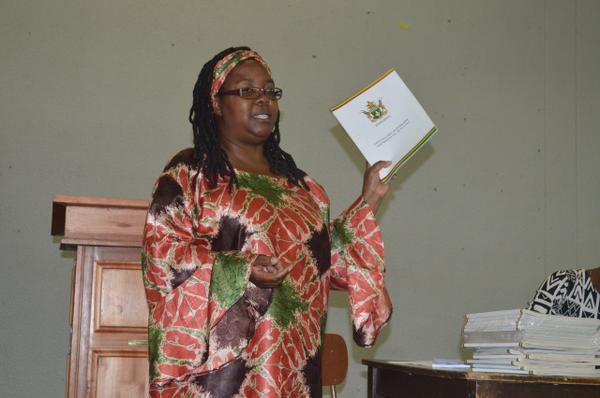
CLAIM: In Zimbabwe, about 1 in 3 women aged 15 to 49 have experienced physical violence and about 1 in 4 women have experienced sexual violence since the age of 15
Source: UNFPA Zimbabwe
VERDICT: Partially Incorrect
- Married adolescents have higher acceptance of violence
- 33% of women in the age group 20-49 were married before attaining 18 years
Researched by Lifaqane Nare
Issues of gender based violence tend to be at the forefront of discourse especially when the 16 days of Activism Against Gender Based Violence are commemorated at the end of November into early December. This year the theme is Orange the World: #HearMeToo.
The United Population Fund Zimbabwe, made the claim on its website that about 1 in 3 women aged 15 to 49 have experienced physical violence and about 1 in 4 women have experienced sexual violence since the age of 15.
Contacted by ZimFact on the source of the statistics, UNFPA Zimbabwe GBV Coordinator, Verena Bruno, said the statistics where from the Zimbabwe Demographic and Health Survey.
How is domestic violence defined?
In Zimbabwe the definition is found in The Domestic Violence Act [Section 5:16] of 2007 where it also brings in elements of gender based violence as well as intimate partner violence. It defines it as any unlawful act, omission or behaviour which results in death or the direct infliction of physical, sexual or mental injury to any complainant by a respondent and includes among others: physical abuse; sexual abuse; emotional, verbal and psychological abuse and economic abuse committed by a person against a spouse, child or other person who is a member of the household.
The act also criminals some abusive customary rites such as virginity testing and forced wife inheritance.
The World Health Organisation (WHO) has a definition for intimate partner violence. It defines IPV as ‘any behaviour within an intimate relationship that causes physical, psychological or sexual harm to those in the relationship’. This can be physical, sexual, emotional or controlling behaviour. The health organisation notes that the term ‘domestic violence’ is used in many countries to refer to partner violence but the term can also encompass child or elder abuse, or abuse by any member of a household.
What story does the data tell?
The current ZDHS is from 2015. While ZimStat carried out one in 2017, the data has not yet been published.
The data from the survey shows that thirty-five percent of women in Zimbabwe have experienced physical violence since age 15 and 14 percent of women age 15-49 reported that they have experienced sexual violence at some point in their lives.
Thirty five percent would translate to about 1 in 3, while the 14 percent would translate to about 1 in 7.
United Nations Women also has the same data stating that lifetime physical and or sexual intimate partner violence for Zimbabwe is at 35%. This is the proportion of ever partnered women aged 15-49 years experiencing intimate partner physical and/or sexual violence at least once in their lifetime. Although the ZDHS is also cited as a source by UN Women, the survey uses 35% for physical violence and not sexual violence.
The Zimbabwe statistics fall within the global trends with WHO reporting that in a study of 9 countries 13–61% of women reported ever having experienced physical violence by a partner and 6–59% reported sexual violence by a partner at some point in their lives. In this study Zambia had 48% for physical violence, and 17% for sexual violence, both being higher than the Zimbabwe averages.
Attitudes towards intimate partner violence
65% of young women in Zimbabwe, ages 15 and 19, believe that intimate partner violence is justified in certain circumstances with the highest acceptance occurring among married adolescents . The Multiple Indicator Cluster Survey of 2014 assessed the attitudes of women to intimate partner violence in the following circumstances: if she goes out without telling him; neglects the children; argues with him; refuses to have sex with him; burns the food; and commits infidelity.
The acceptance by younger women is almost twice as high (65%) as that of older women 45-49 (35%) in believing violence is justified for the six reasons above.
The study also shows that 33% of women 20-49 years were married before attaining the age of 18.

Virginia Muwanigwa, chief executive officer for the Zimbabwe Gender Commission told ZimFact: “Acceptance of violence by survivors stems from socialisation which has normalised gender based violence in intimate relationships. This is reinforced through learning within the family where incidences are minimised, within the media and then through being taught by aunties that violence is part of marriage.
“It has been noted that communities perpetuate violence by treating is as a minor case unless it results in death, where quantum of damages shows that it is a serious issue. In fact, it is alleged that some men, as part of the community, believe that violence begets respect.”
Conclusion
UNFPA Zimbabwe claims that about 1 in 3 women aged 15-49 have experienced physical violence and about 1 in 4 women have experienced sexual violence since the age of 15. They cite the ZDHS as the source of the statistics.
However, the ZDHS 2015, states that that thirty-five percent of women in Zimbabwe have experienced physical violence since age 15 and 14 percent of women age 15-49 reported that they have experienced sexual violence at some point in their lives. This translates to about I in 3 women for the first part of the statement and about 1 in 7 for the second part, specifically experiencing sexual violence at some point in their lives, not necessarily since the age of 15.
ZimFact, therefore, rates the claim by UNFPA Zimbabwe as partially incorrect.
Do you want to use our content? Click Here











